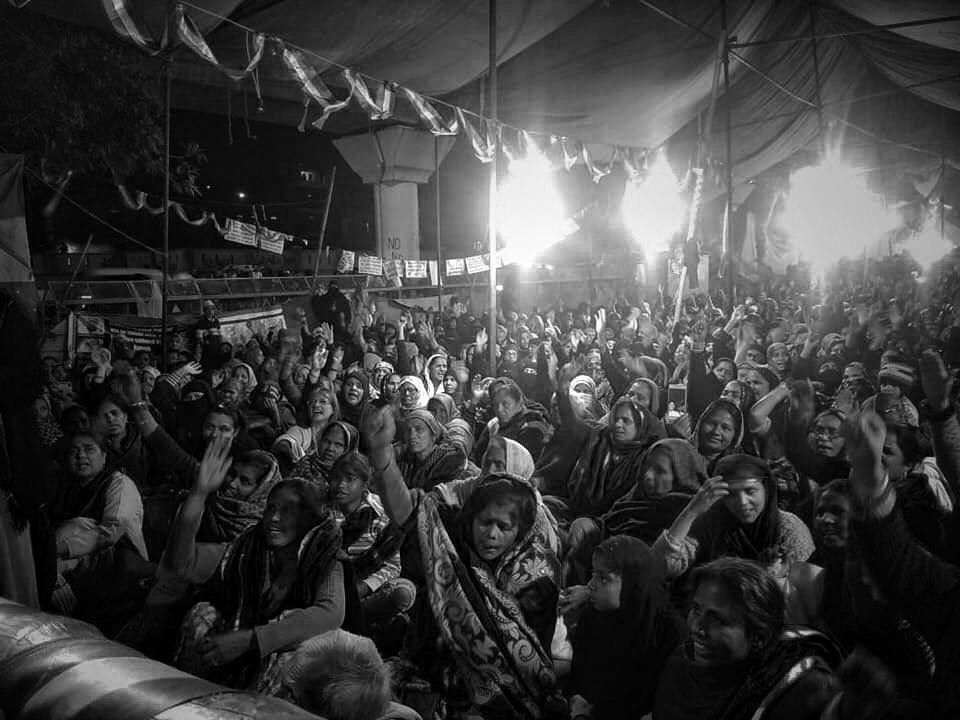Seelampur, a densely populated Muslim locality in New Delhi, became a profound site of resistance and solidarity during the nationwide protests against India’s Citizenship Amendment Act (CAA), the National Register of Citizens (NRC), and the National Population Register (NPR). In their compelling article, Achintya Anita Gurumurthy, Amulya Anita Gurumurthy, Nupur Paliwal, and Saloni Mishra delve into the intricate connections between urban exclusion, gendered resistance, and the spatial politics of protest in Seelampur.
The article sheds light on how Seelampur, historically marginalised through economic exclusion, spatial segregation, and consistent criminalisation by the state, emerged as a vital site of resistance led predominantly by local Muslim women. These women challenged not only the discriminatory citizenship laws but also broader patriarchal norms, neoliberal capitalist structures, and the state’s systematic neglect of their community.
The anti-CAA movement in Seelampur was notable for the ways it disrupted conventional understandings of protest. The women occupied public spaces traditionally denied to them, turning protest sites into vibrant spaces of communal learning, care, and solidarity. Through powerful slogans, poetry, communal meals, and educational activities, they reshaped their neighbourhood’s spatial and social dynamics, effectively asserting their right to the city and redefining their roles beyond domestic spaces.
A companion document to this post provides expanded reflections, anecdotes, and supplementary material that further engage with the themes raised in the article. You can access the extended document here.
Central to Gurumurthy et al.’s argument is the recognition that Seelampur’s women did not simply replicate the politics of other protest sites such as Shaheen Bagh. Rather, their resistance emerged organically from their unique spatial and social conditions. This resistance profoundly feminised dissent, foregrounding the ethics and praxis of care as foundational elements of political activism. Women not only participated but led the movement, organising strategically, democratically making decisions, and effectively navigating risks associated with state surveillance and media misrepresentation.
Moreover, the authors highlight how the protest transformed the community internally. Women, who were traditionally confined to domestic roles and subject to patriarchal constraints, found new forms of solidarity and empowerment. Through their active participation, the rhythms of domesticity were disrupted, and women’s agency in public and political spheres significantly expanded.
The Seelampur protests also addressed broader socio-economic injustices rooted in the community’s systematic exclusion from India’s neoliberal urban development narrative. Seelampur’s residents, predominantly engaged in informal labour, particularly e-waste recycling, have historically endured economic exploitation, precarious working conditions, and social marginalisation. Their resistance was not only against religious discrimination but also against structural economic inequities perpetuated by neoliberal capitalism.
In conclusion, Gurumurthy and colleagues offer a nuanced portrait of Seelampur as a vibrant site of political consciousness and resistance, shaped by intersecting forces of gender, class, and religion. Their account urges readers to recognise how the women of Seelampur, through persistent and courageous activism, reclaimed their city, challenged dominant narratives of citizenship, and fostered a deep sense of communal solidarity and feminist praxis.
the film complements this vital scholarship, visually capturing the transformative impact of women’s resistance in Seelampur, and serves as an invitation to further engage with the community’s powerful struggle for justice, dignity, and recognition.




